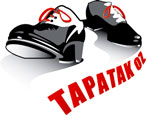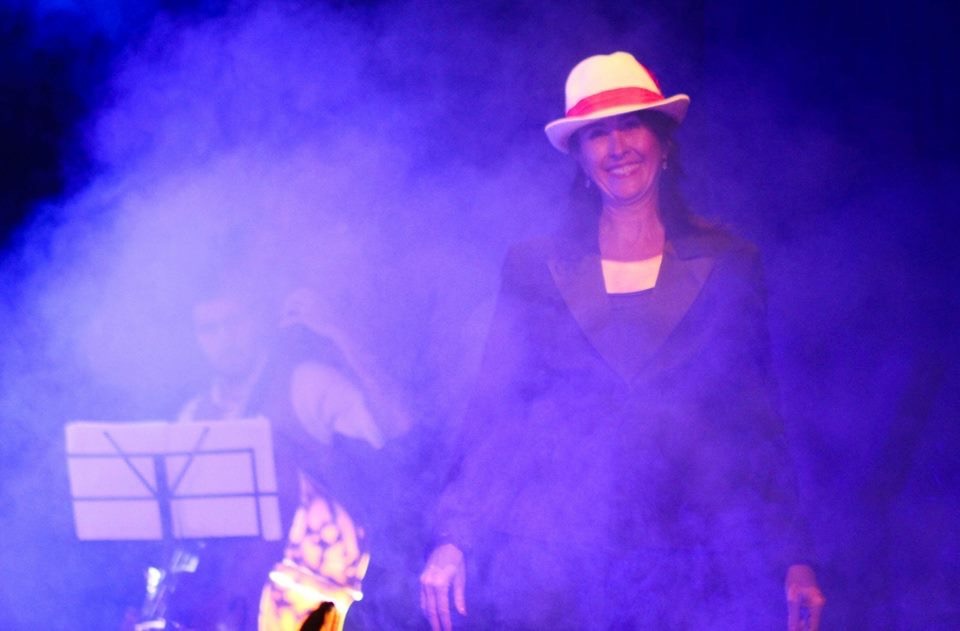Hi Everyone,
Today -let’s talk about some of the ways you can improve the sound of your tapping. In other styles of dance we are usually focused on how the dance looks, but in tap dancing we also have to think about how we sound and there are some subtle techniques that we can use to make a huge difference.
So – what can you do to spice up your rhythms and make sure they are nice and clear with a good level of dynamics? The answer is simple………ACCENT!!
When you are tapping it is really important that you give all your rhythms light and shade. That is, in every rhythm there should be the louder or accented sounds but also the softer, lighter sounds. This is what creates a nice natural sound that has a relaxed and easy flow.
If your tapping only has loud sounds then it tends to sound very forced and listening to it is like being hit over the head with a frying pan. And if all your beats are very soft then the routine will sound bland, uninteresting and lack lustre. The key to a good sound is making sure you have a good mix of both heavier and lighter sounds.
Imagine you are playing a drum kit……or rather your feet are the drum kit. The heel digs are going to be your kick drum and the ball beats are your snare drum. It is this mixture of sounds that makes the tapping both look and sound exciting, as the audience is enthralled by all these different sounds coming out of one pair of feet. Using well placed accent is one of the most effective tools a good tap dancer can have in their kit to assist in creating rhythmic dynamics.
Knowing where the accents fall in a rhythm also helps you make the rhythmic variation in a routine clear. If you have cross phrasing or syncopation in the choreography, then it is imperative that you anchor the rhythms with a clear accent or they run the risk of sounding very unclear and muddled.
For instance – you have a 3 count step that is repeated 4 times to a 4/4 piece of music as follows:
1&2&3 Spring shuffle ball change ( r )
4&5&6 Spring shuffle ball change ( l )
7&8&1 Spring shuffle ball change ( r )
2&3&4 Spring shuffle ball change ( l )
5 6 7 8 Runs x 4 ( r l r l)
If you place a strong accent on the first spring of each repetition, the rhythm will be crystal clear and you will have created some very effective syncopation and cross phrasing in the routine. If however, the accent is missing, then the chance is pretty high that the rhythm will be unclear and you will have missed the opportunity to add this extra dynamic to your routine.
Accent is one of the skills a good tapper uses to anchor all the rhythms in a routine and to give it nice dynamics and oomph, which makes it interesting to listen to. It is the hidden element in your tap performance that gives your sound that extra edge and clarity.
When working in a group it is also the grounding force which can help to keep all the tappers in perfect time, as it provides a reference point for the more complex rhythmic patterns. Like punctuation in a well written piece of literature, accent gives everyone a focal point where the rhythms are either heading to or leaving from, enabling perfect unison in a group.
So – now we have created great dynamics in our footwork, through the use of accent, we also need to mirror that visually. That is, we need to have light and shade or dynamics in how we look as well. We need to have some moments when our arm lines are really sharp and strong and then other moments when our arms relax. Again – if all our arm lines are sharp we will tend to look forced, tense and stiff. And if all our arm lines are relaxed we will look untidy and wishy washy. The key to good dynamics both rhythmically and visually is having a good balance or strong and relaxed, light and shade, loud and soft!
Regardless of the style all tapping requires this use of dynamics within the given genre. Traditional, broadway, funk, street, blues, ragtime – no matter what the style of the choreography or the style of music to which you are dancing these dynamics need to be applied.
You will also find that changing the accents in your footwork can totally change the sound and feel of a step. You can try this out yourself with a few different steps you are currently learning and you will see that by applying the accent in a different part of the step the rhythm develops a different character and personality. For example:
1&2& Heel dig R, brush up R, step and heel drop R
Try the accent on the first heel dig on the count of 1 = 1&2&
Now try it on the final heel on the count of & after the count of 2 = 1&2&
Now try the accent on the step, on the count of 2 = 1&2&
That is a simple example and you can try many more at home.
Till next time – have fun – and keep trying out those handy tips on adding dynamics to your steps and routines!
And for more tapping tips check out my Tap Syllabus
Happy Tapping
Christine


